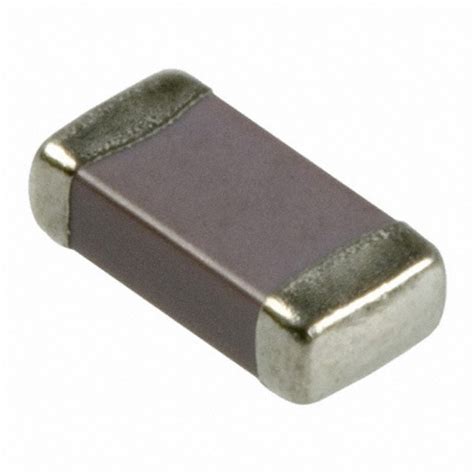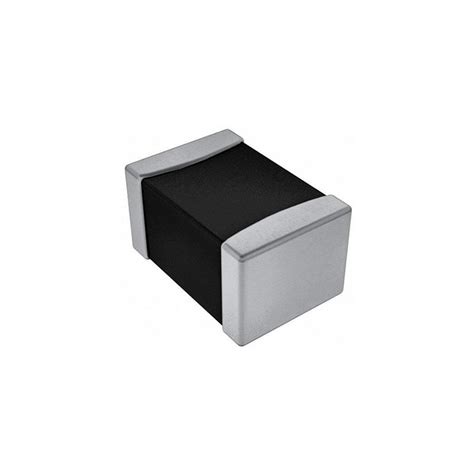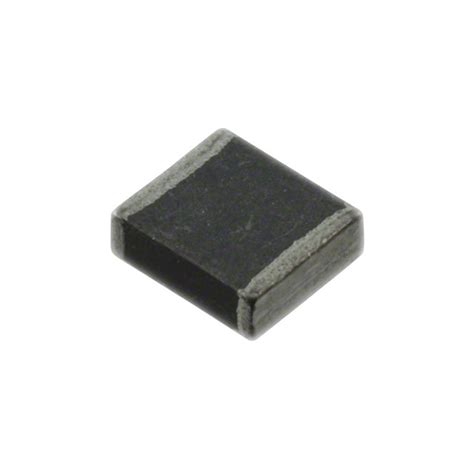What are Ferrite Beads?
Ferrite beads, also known as EMI (Electromagnetic Interference) filters or suppressor beads, are passive electronic components used to suppress high-frequency noise in electronic circuits. They are made of a magnetic material called ferrite, which has high permeability and resistivity. Ferrite beads are commonly used in various electronic devices, such as computers, smartphones, televisions, and automotive electronics, to minimize electromagnetic interference and improve signal integrity.
How do Ferrite Beads Work?
Ferrite beads work by acting as a low-pass filter, allowing low-frequency signals to pass through while attenuating high-frequency noise. When a ferrite bead is placed around a conductor or cable, it creates a high-impedance path for high-frequency currents, effectively dissipating the noise as heat. This process is known as impedance mismatch, where the high-frequency noise is reflected back to its source, preventing it from propagating further along the circuit.
The effectiveness of a ferrite bead depends on several factors, including:
- Material composition
- Geometry and size
- Frequency range
- Impedance characteristics
Types of Ferrite Beads
Ferrite beads come in various shapes and sizes to accommodate different applications and circuit requirements. Some common types of ferrite beads include:
- Surface Mount Device (SMD) Ferrite Beads
- Suitable for high-density PCB designs
- Available in various package sizes (e.g., 0603, 0805, 1206)
-
Easy to integrate into automated assembly processes
-
Through-Hole Ferrite Beads
- Used in larger PCBs or hand-soldered applications
- Provide better mechanical stability
-
Available in various sizes and shapes (e.g., cylindrical, tubular)
-
Cable Ferrite Beads
- Designed to be clipped onto cables or wires
- Help reduce EMI emissions from cables
-
Available in split or solid core designs
-
Ferrite Chips
- Flat, rectangular components
- Can be stacked to increase impedance
- Suitable for space-constrained applications
Applications of Ferrite Beads
Ferrite beads are widely used in various electronic applications to mitigate EMI and ensure electromagnetic compatibility (EMC). Some common applications include:
- Power Supply Filtering
- Ferrite beads are used in power supply lines to suppress high-frequency noise and ripple
-
They help maintain a clean and stable power supply for sensitive electronic components
-
Digital Interfaces
- High-speed digital interfaces, such as USB, HDMI, and Ethernet, employ ferrite beads to reduce EMI and ensure signal integrity
-
Ferrite beads help prevent data corruption and maintain reliable communication
-
Automotive Electronics
- Modern vehicles incorporate numerous electronic systems, such as engine control units, infotainment systems, and advanced driver assistance systems (ADAS)
-
Ferrite beads are used to suppress EMI in these systems, ensuring reliable operation and compliance with automotive EMC standards
-
Radio Frequency (RF) Circuits
- Ferrite beads are used in RF circuits to prevent unwanted high-frequency oscillations and improve signal-to-noise ratio
-
They help maintain the stability and performance of RF transmitters and receivers
-
Wearable Electronics
- Ferrite beads are employed in wearable devices, such as smartwatches and fitness trackers, to minimize EMI and ensure reliable wireless communication
- They help maintain the device’s functionality and prevent interference with other electronic devices

Selecting the Right Ferrite Bead
Choosing the appropriate ferrite bead for a specific application involves considering several factors:
- Frequency Range
- Determine the frequency range of the noise to be suppressed
-
Select a ferrite bead with an impedance profile that effectively attenuates the target frequency range
-
Impedance
- Consider the desired impedance at the target frequency
-
Higher impedance provides better noise suppression but may also affect the desired signal
-
Current Rating
- Ensure the ferrite bead can handle the maximum expected current in the circuit
-
Exceeding the current rating can lead to saturation and reduced effectiveness
-
DC Resistance (DCR)
- Choose a ferrite bead with a low DCR to minimize voltage drop and power loss
-
Higher DCR can impact the efficiency and performance of the circuit
-
Package Size and Mounting Type
- Select a package size and mounting type that is compatible with the PCB design and assembly process
- Consider the available space and mechanical requirements of the application

Ferrite bead selection Table
| Frequency Range | Impedance | Current Rating | DCR | Package Size | Mounting Type |
|---|---|---|---|---|---|
| 1 MHz – 100 MHz | 100 Ω | 1 A | 0.05 Ω | 0603 | SMD |
| 10 MHz – 500 MHz | 220 Ω | 0.5 A | 0.1 Ω | 0805 | SMD |
| 50 MHz – 1 GHz | 600 Ω | 0.2 A | 0.2 Ω | 1206 | SMD |
| 100 MHz – 2 GHz | 1000 Ω | 0.1 A | 0.5 Ω | 0.25″ dia. | Through-Hole |
Note: The values in the table are for reference only and may vary based on specific application requirements and manufacturer specifications.

Best Practices for Using Ferrite Beads
To maximize the effectiveness of ferrite beads and ensure optimal circuit performance, consider the following best practices:
- Place ferrite beads close to the noise source
-
Positioning the ferrite bead near the source of EMI helps minimize the propagation of noise throughout the circuit
-
Use multiple ferrite beads in series
- Placing ferrite beads in series increases the overall impedance and provides better noise suppression
-
Ensure that the combined impedance does not exceed the desired level
-
Consider the impact on signal integrity
- Ferrite beads can introduce impedance mismatch and affect signal integrity, especially for high-speed signals
-
Carefully evaluate the trade-off between noise suppression and signal quality
-
Use ferrite beads in conjunction with other EMI suppression techniques
- Combine ferrite beads with other EMI suppression methods, such as shielding, grounding, and proper PCB layout
-
A holistic approach to EMI mitigation ensures the best overall performance
-
Verify the effectiveness through testing
- Conduct EMI testing to validate the performance of the ferrite beads in the actual application
- Iterate and optimize the design based on the test results to achieve the desired level of EMI suppression
Frequently Asked Questions (FAQ)
- Can ferrite beads be used for low-frequency noise suppression?
-
Ferrite beads are most effective at suppressing high-frequency noise, typically above 1 MHz. For low-frequency noise suppression, other techniques, such as capacitors or chokes, may be more suitable.
-
Are ferrite beads polarity-sensitive?
-
No, ferrite beads are not polarity-sensitive. They can be placed in either direction along the conductor or cable.
-
Can ferrite beads be used in high-temperature environments?
-
Ferrite beads have a specific operating temperature range, typically up to 125°C or 150°C. For high-temperature applications, special high-temperature ferrite materials are available, but their performance may differ from standard ferrite beads.
-
How do I determine the number of ferrite beads needed for my application?
-
The number of ferrite beads required depends on the desired level of noise suppression, the impedance of the selected ferrite bead, and the circuit characteristics. It is recommended to start with one or two ferrite beads and then adjust the number based on EMI testing and performance evaluation.
-
Can ferrite beads be used in place of capacitors for decoupling?
- While ferrite beads and capacitors both contribute to noise suppression, they serve different purposes. Ferrite beads are effective at suppressing high-frequency noise, while capacitors are used for decoupling and filtering. In most cases, a combination of ferrite beads and capacitors is used to achieve optimal noise suppression and decoupling performance.
Conclusion
Ferrite beads are essential components in modern electronic devices for suppressing high-frequency noise and ensuring electromagnetic compatibility. By understanding the characteristics, types, and applications of ferrite beads, engineers and designers can effectively mitigate EMI and improve the overall performance of electronic systems.
When selecting ferrite beads, it is crucial to consider factors such as frequency range, impedance, current rating, and package size to ensure optimal performance in the specific application. Following best practices, such as proper placement, using multiple beads in series, and combining with other EMI suppression techniques, can further enhance the effectiveness of ferrite beads.
As electronic devices continue to evolve and become more complex, the importance of ferrite beads in maintaining signal integrity and preventing electromagnetic interference will only continue to grow. By staying informed about the latest advancements in ferrite bead technology and applying them effectively in electronic designs, engineers can create more reliable, efficient, and EMI-compliant electronic systems.

Leave a Reply